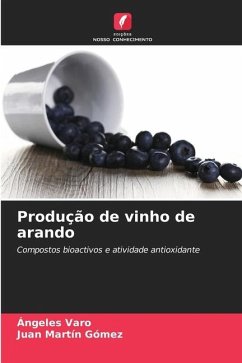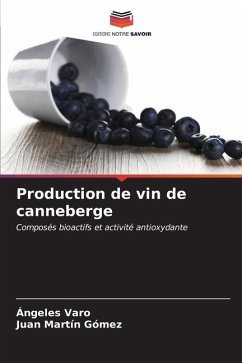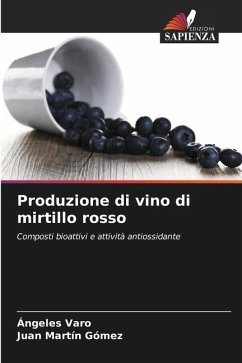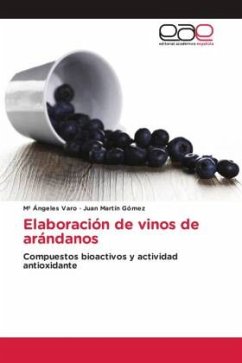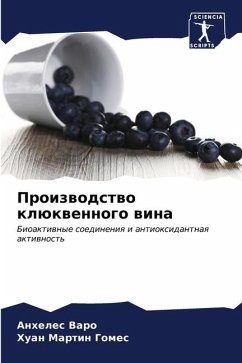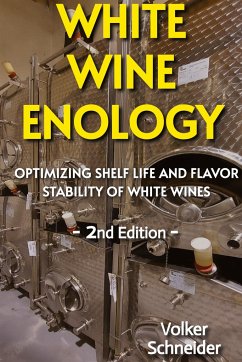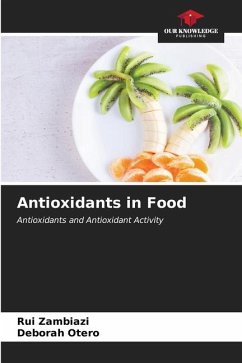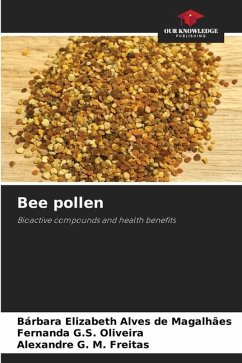
Cranberry winemaking
Bioactive compounds and antioxidant activity
Versandkostenfrei!
Versandfertig in 6-10 Tagen
45,99 €
inkl. MwSt.

PAYBACK Punkte
23 °P sammeln!
Blueberries are fruits whose use has increased in recent years because they are a source of antioxidants for the diet. In this study, blueberry wines, i.e., alcoholic beverage obtained by partial or complete fermentation of fresh blueberry juice, pulp maceration and addition of sugar water (21 °Brix), have been elaborated. Specifically, different proportions of fruit/sugar solution were used and fermentation was carried out at different temperatures and fermentation times, with the aim of selecting the best conditions for the production of these wines. In addition, a series of post-fermentati...
Blueberries are fruits whose use has increased in recent years because they are a source of antioxidants for the diet. In this study, blueberry wines, i.e., alcoholic beverage obtained by partial or complete fermentation of fresh blueberry juice, pulp maceration and addition of sugar water (21 °Brix), have been elaborated. Specifically, different proportions of fruit/sugar solution were used and fermentation was carried out at different temperatures and fermentation times, with the aim of selecting the best conditions for the production of these wines. In addition, a series of post-fermentation treatments were applied to the wines produced to improve their organoleptic characteristics. During the winemaking process, the wines underwent a maceration process, where part of the bioactive compounds from the skins were transferred to the liquid. Anthocyanins are the most important pigments in vascular plants and are responsible for the color of the fruit, between the red and blue characteristic of blueberries. Also of note are the flavonol families and flavan-3-ol derivatives.



